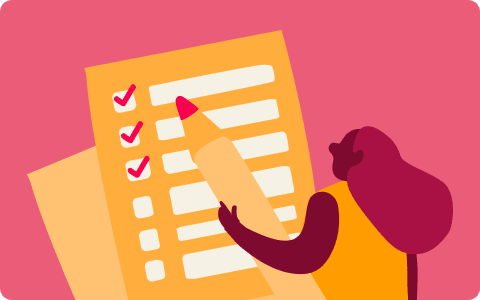Employee enablement is more than simply giving people the tools they need. It’s about creating the right conditions, culture, and mindset so that people can do their best work, grow, and have impact.
In practice, enablement happens in layers:
- Foundation – access to systems, resources, and clear information.
- Development – opportunities to learn, receive feedback, and grow through coaching and mentoring.
- Autonomy – empowering people to make decisions, lead initiatives, and innovate.
Why does employee enablement matter?
When done right, enablement can significantly influence productivity, innovation, retention, and overall engagement.
It’s particularly critical in fast-growing companies, where scale often creates friction. Without thoughtful enablement, people may feel lost, underprepared, or disconnected—leading to burnout or attrition.
Managers play a central role here: they are the day-to-day enablers. The way managers share context, delegate decisions, and model transparency has more impact than any single tool or workshop.
Common challenges in enablement
While enablement sounds straightforward, organizations often face obstacles such as:
- Managers who lack the skills or confidence to truly enable their people (for example, they may not know how to delegate effectively, provide empowering feedback, or share decision-making).
- Lack of budget or bandwidth for consistent programs.
- Overcomplicating with too many tools and processes.
- Difficulties in global or hybrid setups (different time zones, languages, cultural norms).
Acknowledging these challenges makes enablement efforts more realistic and credible.
How to practice employee enablement
Instead of viewing enablement as a one-off initiative, treat it as a continuous process built into everyday work.
Some practical approaches:
- On-the-job learning: shadowing, peer-to-peer coaching, micro-learning resources embedded in workflows.
- Knowledge capture: playbooks, wikis, and templates that reduce dependency on “who you know.”
- Global enablement practices: ensuring asynchronous access to updates, recordings, and FAQs for distributed teams.
- Employee champions: building networks of internal experts who help others adopt tools, share knowledge, and role-model behaviors.
How do you improve employee enablement?
You can improve employee enablement by:
- Establishing clear expectations. Clearly communicate job expectations, goals, and objectives to people. This clarity helps them understand their roles and responsibilities, enabling them to meet those expectations.
- Asking what people need. Ask what employees need to be able to do their jobs, or what could help them perform better—and provide it to them.
- Providing training and development. Help people grow their skills through development programs, workshops, and coaching.
- Encouraging open communication. Create a culture that encourages open communication, feedback, and collaboration. That way, people feel valued and more comfortable with sharing their suggestions to help the company improve.
Empowering employees. Promoting employee empowerment also improves employee enablement. You can do this by showing people that you trust them and their abilities. Give them the chance to take on greater responsibilities and the authority to make decisions related to their work.
Measuring the impact
Traditional metrics, such as surveys, productivity, and retention, are important—but not enough.
Advanced enablement metrics could include:
- Time-to-productivity for new hires.
- Adoption rates of new tools or processes.
- Employee-driven innovation (e.g., number of employee ideas piloted).
- Psychological safety scores or trust indicators within teams.
- Manager quality as reported in engagement surveys.
These go beyond “are people happy?” to “are people empowered to contribute at their best?”.
What is the difference between employee enablement and engagement?
Employee engagement focuses on creating a positive and fulfilling employee experience that helps people feel motivated to do their best at work.
Employee enablement, on the other hand, is about providing people with the practical tools and resources they need to carry out their work effectively.
Even though employee enablement and engagement are different, both are needed for the best results.
How can HR tech help with employee enablement?
HR technology can make it easier to promote employee enablement. There are a number of tools you can use to help:
- Employee enablement platform. Some HR software comes with digital employee enablement tools, like metric analysis and training resources, that help you ensure that your people have everything they need to perform at their best.
- Learning management system. Use a learning management system (LMS) to give employees easy access to training materials and professional development resources. This helps them be more effective in their work by expanding their skill sets.
- Performance management system. There’s a close link between employee enablement and performance. Measuring employee performance with a performance management system, combined with other methods, can be a good way to assess employee enablement.
- Collaboration and communication tools. Tools such as project management platforms, instant messaging apps, and intranet portals make it easy for people to work together, communicate, and share knowledge—enabling people to work better.
- Employee feedback tools. Feedback platforms make it easy for employees to let you know what’s going well and what needs improvement, so you know exactly what to do to improve the situation.
Recommended For Further Reading
Case studies
Case 1: Scaling managers in hypergrowth
A tech company grew from 200 to 800 employees in a year. Many new managers lacked leadership experience. HR built a manager enablement program with mentoring, peer-learning circles, and ready-to-use playbooks. Within six months, voluntary attrition in those teams dropped by 20%.
Case 2: Global team alignment
In a company with offices across Israel, the US, and Europe, people outside HQ felt disconnected. A centralized knowledge hub with recordings, structured notes, and live Q&A solved the gap. Engagement scores among global teams rose by 15% in the next survey.
Final thoughts
Employee enablement is not a “nice to have.” It’s a strategic necessity for organizations that want to scale sustainably.
The most effective programs are those that:
- Combine tools, learning, and culture.
- Involve managers as primary enablers.
- Address real-world challenges like hybrid work.
- Evolve continuously through feedback and measurement.
In my experience, organizations that treat enablement as part of their DNA—not as a side project—are the ones where people thrive, innovate, and stay.
